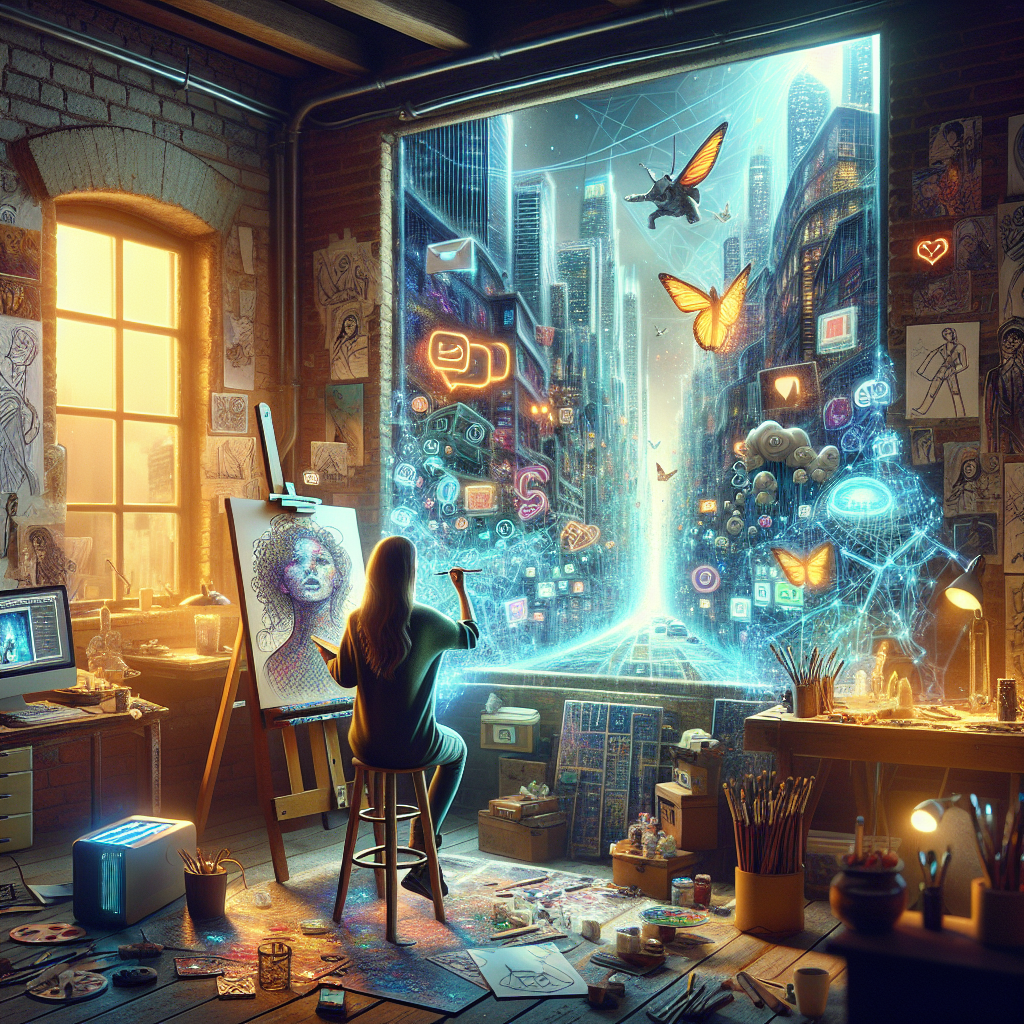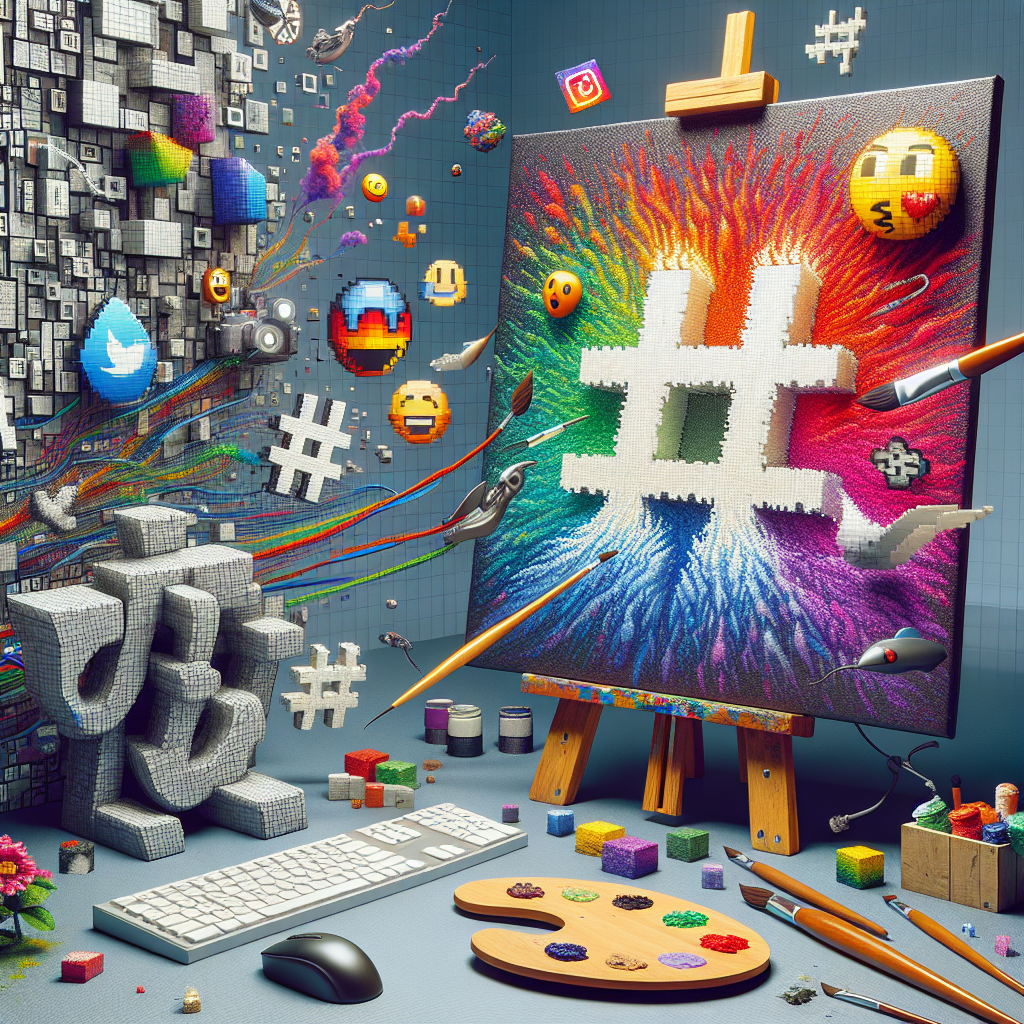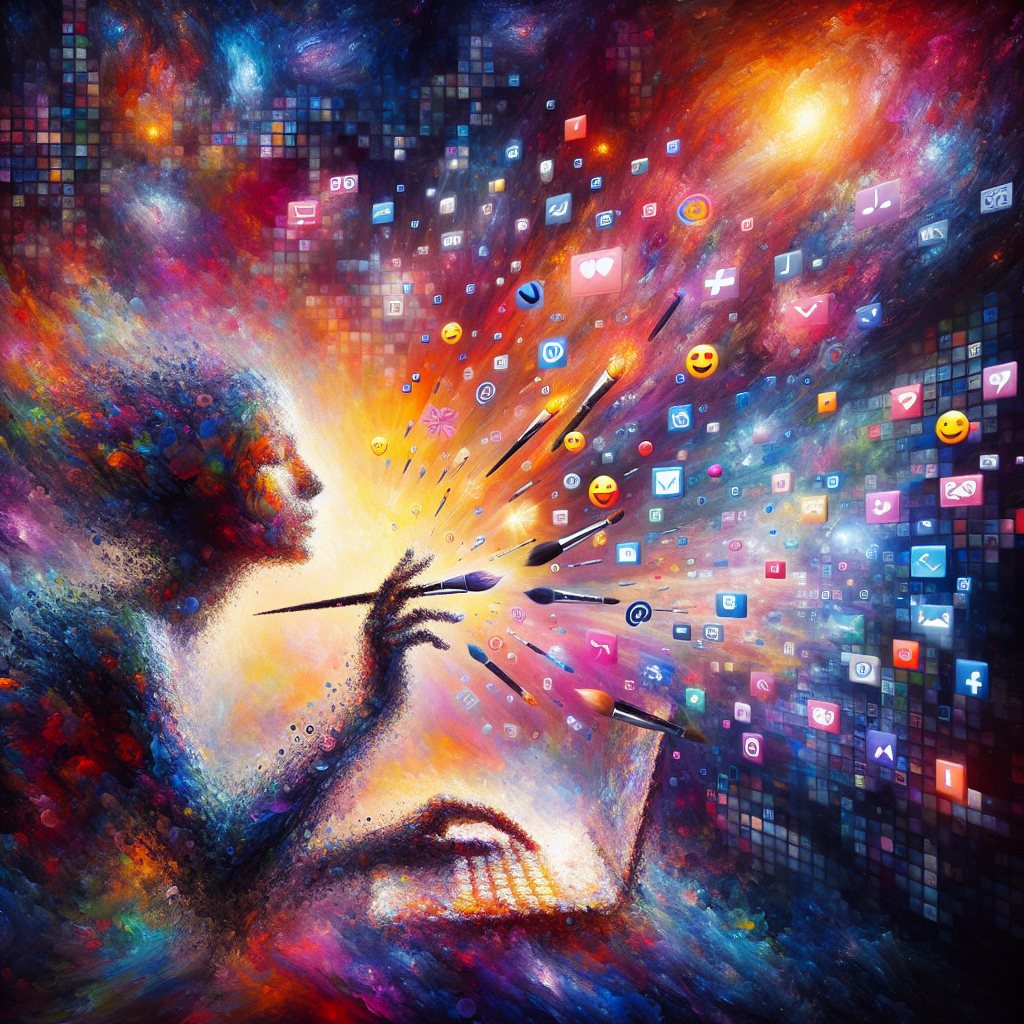The intersection of high speed internet culture and artistic expression is a dynamic and ever-evolving landscape that continues to shape the way we create, consume, and interpret art. From meme culture to social media influencers, the online world has become a powerful platform for artists to explore new forms of creativity and connect with a global audience like never before. This shift has not only blurred the lines between traditional and digital art but has also challenged the boundaries of what is considered art in the digital age. Join us as we embark on a journey to uncover the profound impact of internet culture on artistic expression.
Understanding the Relationship Between Internet Culture and Art
Definition of Internet Culture
Internet culture refers to the collective behavior, beliefs, and practices that have developed within online communities. It encompasses the shared norms, language, and humor that have emerged through the use of the internet. This culture is characterized by rapid dissemination of information, participatory nature, and the creation of virtual communities.
Evolution of Internet Culture
The evolution of internet culture has been marked by the rise of social media platforms, meme culture, and online trends that shape the way individuals interact and communicate online. From the early days of chat rooms and forums to the current era of influencers and viral content, internet culture has become a significant aspect of contemporary society.
Definition of Art in the Digital Age
Art in the digital age encompasses a wide range of artistic practices that utilize digital technologies for creation, dissemination, and engagement. This includes digital art, net art, interactive installations, and other forms that blur the boundaries between traditional art forms and technology. Artists are increasingly exploring new mediums and platforms to express their creativity in the digital realm.
Connection Between Internet Culture and Art
The connection between internet culture and art is profound, as the internet has become a fertile ground for artistic expression and experimentation. Artists are inspired by online trends, digital aesthetics, and the democratization of creativity that the internet enables. Internet culture influences the themes, styles, and techniques that artists incorporate into their work, reflecting the dynamic and ever-evolving nature of the digital landscape.
The Influence of Social Media on Art Creation and Consumption
- Social media platforms as a medium for artists
- Artists today are increasingly utilizing social media platforms as a primary medium for showcasing their work and connecting with a global audience.
- Platforms such as Instagram, TikTok, Twitter, and Pinterest have become virtual galleries where artists can exhibit their creations without the traditional constraints of physical galleries.
- The immediacy and accessibility of social media have democratized the art world, allowing emerging artists to gain recognition and visibility that was previously reserved for established artists.
- Fostering creativity through online communities
- Online communities on social media provide artists with a supportive network where they can share ideas, collaborate on projects, and receive feedback from peers and followers.
- These communities serve as virtual art studios where artists can experiment with new techniques, styles, and mediums in real-time.
- The constant exchange of ideas and inspiration within online communities fuels creativity and pushes artists to explore innovative approaches to artistic expression.
- Impact of social media algorithms on art visibility
- The algorithms used by social media platforms play a significant role in determining the visibility and reach of artists’ work.
- Artists often have to navigate these algorithms by utilizing strategies such as using relevant hashtags, posting at optimal times, and engaging with their audience to enhance the visibility of their art.
- However, the algorithms can also present challenges, as they prioritize popular content and trends, potentially overshadowing niche or unconventional artistic expressions.
Memes and Viral Trends: Shaping Contemporary Art

The rise of meme culture has significantly influenced artistic expression in the digital age. Memes, which are humorous or satirical images, videos, or pieces of text that are rapidly shared and altered by internet users, have become a pervasive form of communication online. Artists have embraced this phenomenon, recognizing the cultural relevance and impact of memes on society. The inherently participatory nature of memes has democratized art creation, allowing individuals from diverse backgrounds to engage with and contribute to artistic discourse.
Incorporation of memes into art
Artists are increasingly incorporating memes into their work, blurring the lines between internet culture and traditional artistic practices. By integrating familiar meme formats, symbols, or references into their creations, artists can tap into the collective consciousness of online communities. This fusion of internet culture and art has led to the emergence of new artistic movements and styles that reflect the dynamic and ever-evolving nature of digital communication.
Exploring the concept of viral art
Viral art, a phenomenon closely tied to internet culture, refers to artworks that gain widespread popularity and recognition online, often through social media platforms or digital sharing networks. The virality of these artworks is driven by their ability to resonate with audiences on a visceral or emotional level, compelling viewers to engage with and share the content with others. The instantaneous and wide-reaching nature of the internet enables artists to reach global audiences and elicit diverse responses to their work, challenging traditional notions of art consumption and appreciation.

Crowdsourcing and Collaboration in the Digital Art Realm
The digital age has revolutionized the way artists collaborate and engage with their audience. Through online platforms and social media, artists can now easily connect with like-minded individuals from around the world to create innovative and boundary-pushing works of art. Crowdsourcing and collaboration in the digital art realm have opened up a plethora of opportunities for artists to explore new ideas and techniques, pushing the boundaries of traditional artistic expression.
Collaborative projects facilitated by the internet
Digital platforms such as Behance, DeviantArt, and Dribbble have paved the way for artists to engage in collaborative projects like never before. Artists can now easily find collaborators with complementary skills and styles, leading to the creation of groundbreaking artworks that blend different perspectives and expertise. These collaborative projects often result in unique and dynamic pieces that showcase the power of collective creativity in the digital age.
Crowdsourcing ideas and feedback for artistic endeavors
One of the most significant impacts of internet culture on artistic expression is the ability to crowdsource ideas and feedback for artistic endeavors. Artists can now leverage the wisdom of the crowd to gather diverse perspectives and insights on their work, helping them refine their ideas and push their creativity to new heights. Platforms like Reddit and Discord have become hubs for artists seeking feedback and critique, fostering a culture of collaboration and mutual support within the digital art community.
Examples of successful collaborative digital art projects
Numerous successful collaborative digital art projects have emerged in recent years, showcasing the transformative power of internet-facilitated collaboration. Projects like “The Johnny Cash Project,” where participants contributed individual drawings to create a collective animated music video, demonstrate how digital platforms can bring artists together to create something truly extraordinary. Similarly, online art collectives like “The Black Math” and “Depthcore” have leveraged the internet to curate collaborative exhibitions that push the boundaries of traditional art forms and redefine artistic expression in the digital age.
Digital Tools and Technologies Revolutionizing Artistic Techniques
Advancements in digital art software have significantly transformed the way artists create and express themselves in the modern era. With the rise of software such as Adobe Creative Suite, Procreate, and Corel Painter, artists now have a vast array of tools at their disposal to manipulate images, create digital paintings, and explore new artistic styles. These software packages offer features like layers, blending modes, and digital brushes that allow artists to experiment with different techniques and effects that were previously unattainable with traditional mediums.
Virtual reality (VR) and augmented reality (AR) have also made a profound impact on artistic expression by enabling artists to create immersive experiences that transcend the boundaries of physical space. Through VR technology, artists can design interactive installations, 3D sculptures, and virtual environments that viewers can explore and interact with in ways that are impossible in the real world. Similarly, AR technology allows artists to overlay digital artwork onto the physical environment, merging the digital and physical realms in innovative ways.

The impact of technology on traditional art forms cannot be understated. Techniques such as digital painting, 3D modeling, and generative art have emerged as new forms of artistic expression that blur the lines between the digital and physical worlds. Artists are increasingly incorporating digital tools and technologies into their creative processes, pushing the boundaries of what is possible in art and expanding the definition of artistic expression in the digital age.
Navigating Copyright and Ownership Issues in the Online Art Community
In the digital age, artists face a myriad of challenges regarding copyright and ownership in the online art community. The internet has reshaped the way art is created, shared, and consumed, leading to complex legal and ethical issues that artists must navigate.
- Challenges of copyright in the digital age
- The ease of sharing and replicating digital content has made it difficult for artists to protect their work from unauthorized use.
- Copyright laws vary across different countries, adding another layer of complexity for artists creating and sharing art online.
- The concept of fair use becomes blurred in the online realm, as individuals may mistakenly believe that all content is free for the taking.
- Protecting artists’ rights online
- Artists can utilize digital watermarking techniques to protect their work from unauthorized use or reproduction.
- Some platforms offer tools for artists to license their work and specify how it can be used, helping to maintain ownership and control over their creations.
- Building a strong online presence and engaging with the audience directly can also help in protecting artists’ rights and fostering a community of supporters.
- Addressing plagiarism and appropriation in internet-influenced art
- The internet has made it easier for individuals to plagiarize or appropriate others’ work, often without proper attribution.
- Artists need to be vigilant in monitoring their online presence and taking action against any instances of plagiarism or unauthorized use of their art.
- Engaging in conversations about ethics and proper attribution within the online art community can help raise awareness and promote a culture of respect for artists’ rights.
FAQs Exploring the Impact of Internet Culture on Artistic Expression
What is the relationship between internet culture and art?
The relationship between internet culture and art is a complex and multifaceted one. The internet has had a profound impact on the way artists create, share, and consume art. It has provided a platform for artists to reach a global audience, collaborate with other creatives, and experiment with new forms of expression. Internet culture, with its memes, trends, and communities, has influenced the subject matter and aesthetics of contemporary art. Artists often draw inspiration from online phenomena and use digital tools to create innovative works that reflect the digital age.
How has internet culture changed the way art is created and consumed?
Internet culture has democratized the art world, making it more accessible and inclusive. Artists no longer need to rely on traditional gatekeepers like galleries and museums to showcase their work – they can easily share their creations on social media, websites, and online platforms. This has allowed for a more diverse range of voices and perspectives to be heard in the art world. Additionally, the proliferation of digital art forms, such as GIFs, memes, and virtual reality experiences, has pushed the boundaries of traditional artistic mediums and blurred the lines between art and technology.
Can you give examples of how internet culture has influenced contemporary art?
One prominent example of internet culture’s influence on contemporary art is the rise of meme art. Artists like Banksy, Shepard Fairey, and Yayoi Kusama have incorporated internet memes and viral images into their work, using them to comment on social and political issues or to create humorous and relatable pieces. Another example is the use of technology in art, such as augmented reality installations, interactive websites, and digital animations. Artists like Olafur Eliasson, Refik Anadol, and teamLab have embraced technology as a medium for artistic expression, creating immersive and interactive experiences that engage audiences in new and innovative ways.